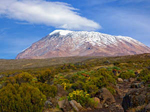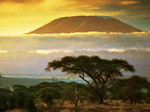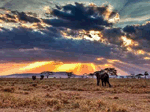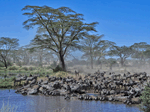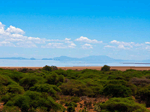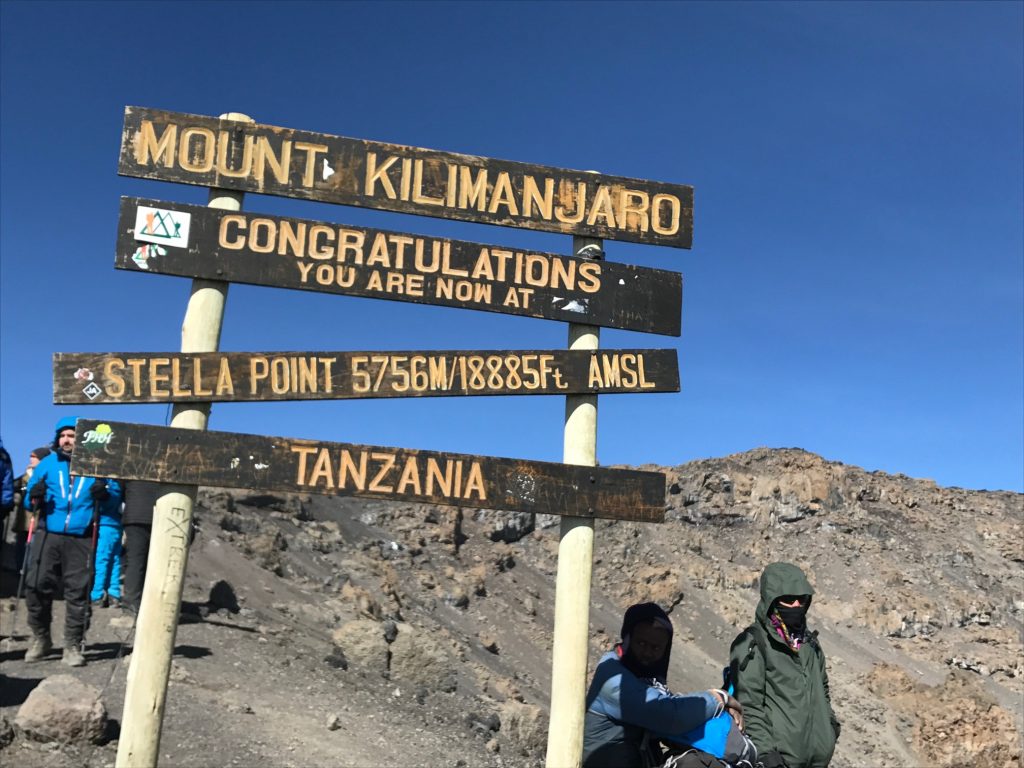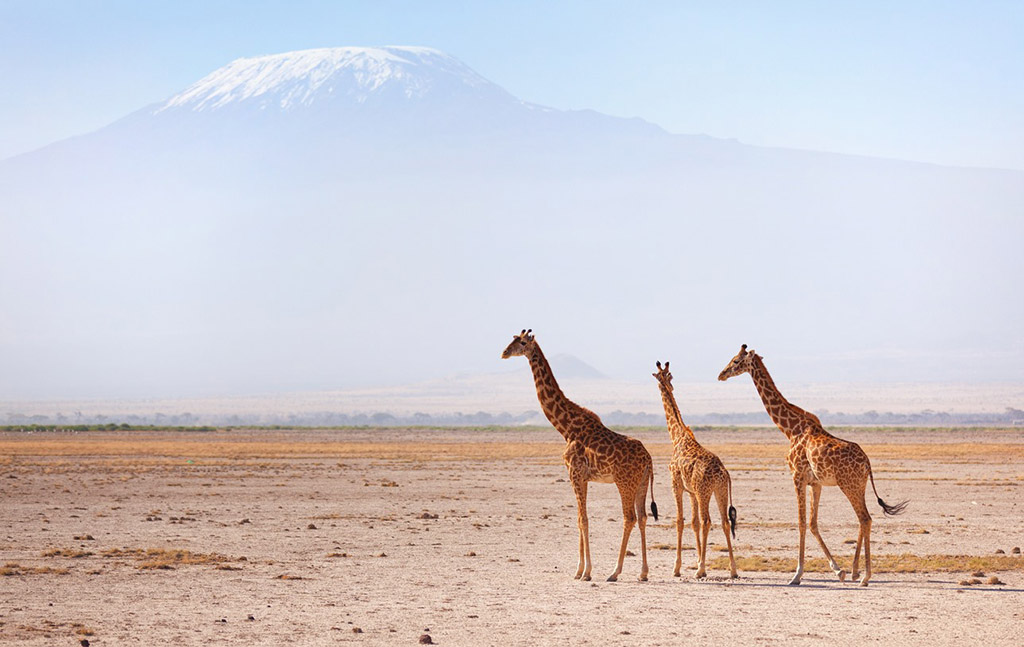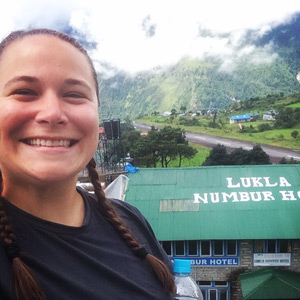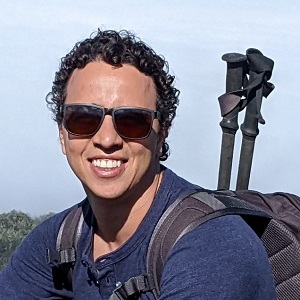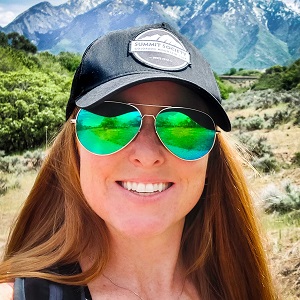Update Aug 3rd, 2023: Coronavirus Updates
Tanzania has reopened and we have been running all climbs and safaris on schedule. All Covid requirements have been lifted and proof of vaccination (or a negative test) is no longer required to enter Tanzania. We still suggest your travel with your covid vaccination card if you are vaccinated.
Continue reading >
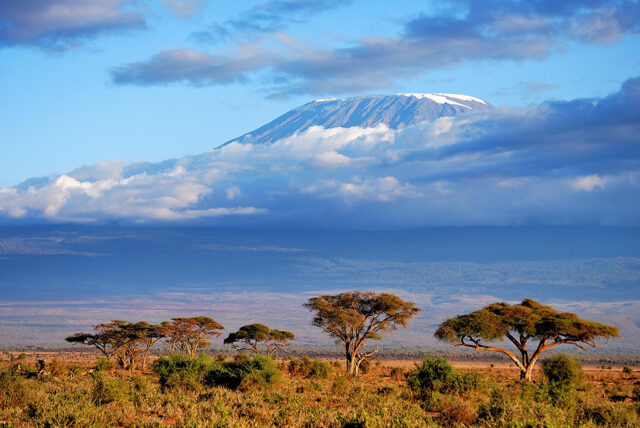
Planning to climb Kilimanjaro? Here are our top 10 tips for first time climbers based on what we have learned from running 100s of climbs and our 10 years on the mountain. Kilimanjaro is a challenge but as long as you’re in reasonably good shape a successful climb is possible with proper planning. Read on to discover our top tips and links to our most read blog posts on Kilimanjaro.
Continue reading >

All trekkers attempting Kilimanjaro or any other high elevation trek should be aware of the potential threat of High Altitude Sickness or Acute Mountain Sickness (AMS). AMS is caused by the limited oxygen available at altitude. Atop Kilimanjaro there is half the oxygen that there is at sea level, which means you are likely to feel some of Acute Mountain Sickness’ physiological effects. There’s no understating how important it is to be aware of this potentially life threatening condition and its symptoms. It’s a common misconception that physically fit persons are less likely to feel its effects. Everyone is susceptible to AMS, it does not discriminate. For safety reasons, this article is worth a read even if you have been to high elevations without symptoms before.
Continue reading >
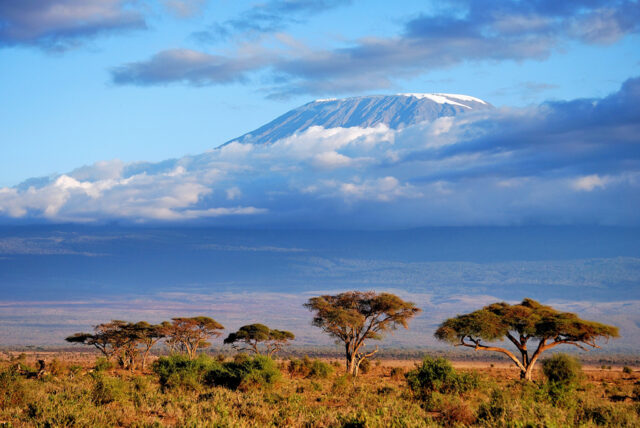
Kilimanjaro has a typical annual weather pattern alternating between rainy and dry seasons. As Kilimanjaro is situated at the equator so temperatures actually don’t change much throughout the year. In fact, temperatures at the summit remain relatively stable while lower elevations tend to be 5 or 6 degrees Celsius (10 to 12 degrees Fahrenheit) cooler in June/July and August. For optimal trekking conditions we recommend attempting to summit during a dry season. The dry seasons run from January to mid-March and then again from June to October. The optimal months being February and August, followed closely by January and September, then June, July and October. The primary rainy season or “long wet” is from Mid-March to Mid-May and the secondary rainy season or “short wet” is from November to December. Climbing is still possible in November and December (the “short wet”) as rains tend to be limited in duration. It is also possible to climb during the “long wet” but we generally don’t recommend it as the trails are muddy and rains can last several days. As each month varies in cloud coverage, sun exposure, and low temperatures at altitude, we’ve created this month by month guide. Trekkers should have a clear idea of the weather conditions of the months they’re trekking to the Roof of Africa.
Continue reading >

Mount Kilimanjaro lies in the tropics and the seasons are marked more by variations in rainfall then by changes in temperature. The main driving force controlling the climate is the migration of the Intertropical Convergence Zone or ITCZ. The ITCZ marks the convergence between the north and south trade winds and can be picked out in Satellite pictures as a broad band of thunderstorms which encircles the globe. What’s the best time to climb Kilimanjaro The best time to climb is from June to September (Long Dry Season) and from January to February (Short Dry Season). June, January and February might be considered the best months as they have great weather and not as many visitors come to the mountain. The busiest time of year on the mountain is in September. On average the “Long Wet” season lasts from the 25th of March until the 21st of May and we don’t recommend climbing during this period although it is possible. Is it possible to climb Kilimanjaro during the rainy season? One advantage to climbing during the wet seasons is that you will practically have the mountain to yourself. Some climbers enjoy seeing the summit covered in snow and the climbing […]
Continue reading >
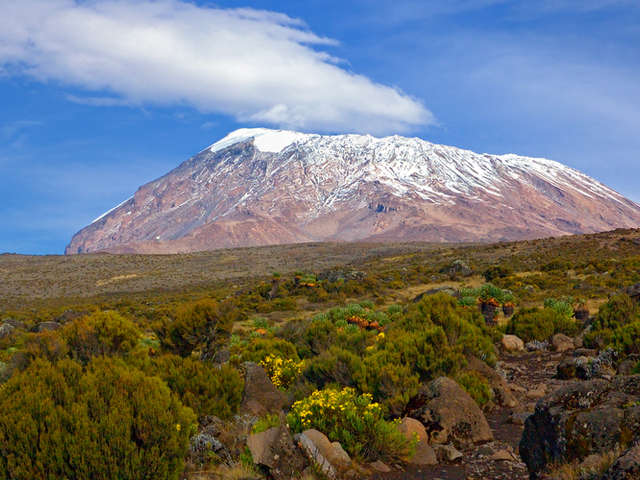
Are you planning a trek and trying to decide between either Everest Base Camp or Kilimanjaro? I have been to both and wanted to put together a bit of a comparison of the experience on each. This comparison looks specifically at the Kilimanjaro’s Marangu Route which is the quickest and also one of the most popular summit approaches. The other routes to Kilimanjaro’s summit take more time and give trekkers a better chance to acclimatize.
Continue reading >

As with every big trek, it’s important to do your research and come physically prepared before joining us on the expedition up Kilimanjaro. Experienced trekkers know that this is the way to maximize the value of your excursion. However, what you may not realize is that Kilimanjaro waits until the last 4,000 feet, when you are dead on your feet and stumbling through the darkest part of the night to truly test you. However, with this guide you can get through the infamous summit night to fulfillingly see morning’s first light breaking over the horizon from atop Uhuru Peak. Here’s a look at what to expect on your summit night.
Continue reading >
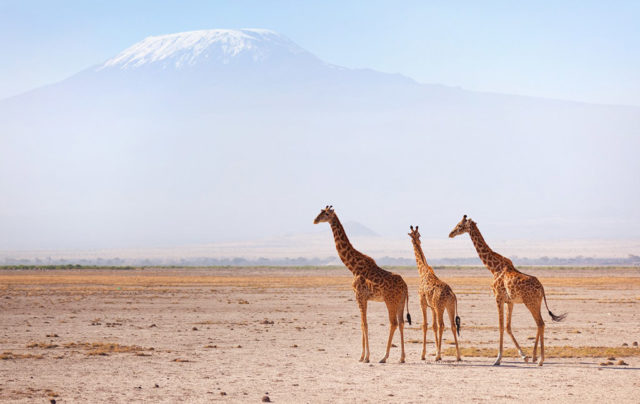
If you’ve had a trip to Kilimanjaro in the back of your mind for a while, consider this the final push! Kilimanjaro should be your first choice when it comes to trekking in Africa. With the right preparation and determination, you could reach the ‘Roof of Africa’. It’s a life changing journey that will take you through unique and alluring landscapes filled with geographical wonders. What better way to test your limits, see the delightfully biodiverse ‘heartland’ of Africa, or expand your cultural horizons? Here our top 7 reasons for climbing Kilimanjaro.
Continue reading >

For those of us who are already daydreaming about their next meal, you are probably wondering what quality of food there could be on the trek to Kilimanjaro’s summit. Our Adventure Expert and Kilimanjaro enthusiast Rob Hatch shares this insight “The food is delicious, and is often one of the favorite parts of the trip for our guests. Personally, I found the hot cucumber soup on our way down from the peak to be one of the tastiest and most satisfying meals I’ve ever eaten.” So what other delectable food options are on the trek?
Continue reading >

Summiting Mt. Kilimanjaro is a feat worthy of any trekker’s bucket list. During this incredible trek, you’ll walk through rainforests, experience breathtaking sunrises, walk along glaciers, and—of course—summit one of the most famous peaks in the world. However, with 72-78 km (45-48 miles) of round-trip trekking and 3,944-4066 km (12,940-13,340 ft) of elevation gain, the trail to the top of the highest mountain in Africa is not for the faint of heart. We believe that anyone who is physically healthy can successfully summit Mt. Kilimanjaro with the right preparation, acclimatization, and training! In this article, we discuss 15 of our top tips for summiting Kilimanjaro successfully. Tips for Summiting Mount Kilimanjaro Only about 60-65% of people successfully reach the summit of Kilimanjaro. The main reasons people don’t make it to the top are poor acclimatization and failure to train. However, with some preparation and a little consideration, you can increase your chances of summiting Kilimanjaro! Below are some of our top tips for increasing your chance for success in summiting Mt. Kilimanjaro. Tip 1. Stick to Longer Routes One of the main reasons people don’t make it to the top of Kilimanjaro is due to acclimatization problems. Not reserving enough […]
Continue reading >
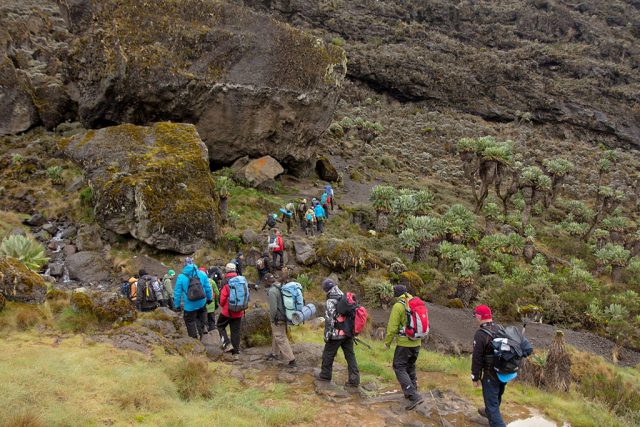
There are few harder jobs than being a porter on Kilimanjaro, and the history of the tourism industry in Tanzania unfortunately began with unsafe practices that left many porters and guides injured and unable to support their families. These practices created an unsustainable and unsafe environment for everyone working on the mountain.
Continue reading >

Once you decide you’re going to take on Africa’s highest peak there are a few things you’ll need to figure out before you set foot on the mountain. We help hundreds of climbers make their way to the summit of Kilimanjaro each year, and wanted to answer some of the most common questions we get as people prepare for their trip.
Continue reading >

Mount Kilimanjaro, often called “the Roof of Africa”, is the tallest mountain on the continent, and at 5,895m, it is the tallest free standing mountain on Earth. It has been a focus point for climbers from all over the world since it was first summited over 125 years ago. Depending on the route, climbers find that Kilimanjaro has almost every kind of ecological system somewhere on the mountain: cultivated land, rain forest, heath, moorland, alpine desert and an arctic summit. Each route leads the climber through a different set of ecological wonders on the way to the Uhuru Peak.
Continue reading >

Tips are a big part of the culture in Tanzania and unlike some countries where tipping might be optional they are an expectation in Tanzania. Tips for each climber range between $250 and $400 depending on the route and are an extra cost that should be factored into your budget.
Continue reading >

The Lemosho Route on the Western side of Mt. Kilimanjaro is currently the second most popular route to the summit. As it is such a popular route, we thought it would be helpful to provide more detailed information on the day by day experience using this well-traversed route.
Continue reading >

For anyone not taking the Marangu route to Kilimanjaro, sleeping in tents is going to be a way of life on your journey to the summit of Mt. Kilimanjaro. Here are some things to expect during your time at Kilimanjaro campsites:
Continue reading >

It’s possible to rent gear locally for climbing the mountain but it’s expensive and the quality is certainly poor for the money you will be spending. If you let us know in advance its possible we can provide some gear to you free of cost. However, the best bet is to bring your own gear (Complete list) . On your first night in Moshi before starting the trek you will be introduced to your guide and he will review your equipment to make sure you are adequately prepared. Climbers heading to the mountain need to be properly equipped for rainy conditions on the way to the summit and freezing temperatures at the summit. Keep in mind that gear will generally be divided up while your hiking. The bulk of your gear will be carried by our porters in a duffel bag and you will carry a daypack with the essentials which include snacks, camera, headlamp, poncho, extra layers, sun protection and water bottles. The follow article describes the equipment needed in full detail. If you want to jump right to our Kilimanjaro packing list you can download as a word doc or pdf. Base, Middle and Outer Layers The principle […]
Continue reading >

Kilimanjaro is the highest mountain in Africa attracting over 35,000 climbers annually. Trekkers can choose between seven different route options (Marangu, Machame, Lemosho, Shira, Rongai, Northern Circuit and Umbwe). Here we take a closer look at the Marangu, Machame routes which are the most popular options and combined account for nearly 85% of visitor traffic to the mountain. Each route offers a uniquely different experience so it’s worth getting the facts before you make a selection. Huts (Marangu Route) vs Camping (Machame Route) The hut experience on Marangu vs. the camping experience offered by Machame is perhaps the biggest consideration and difference between the two routes. Marangu offers an extensive system of well developed huts, shared dinning lodges and developed bathrooms. The huts are commonly shared between 4 persons although the higher Horombo Hut has a mix of dorm and quad shared rooms and Kibo is completely dormitory style. The bathrooms at Horombo Hut and Mandara are well maintained with flush toilets and solar lighting. The dinning lodges are comfortable, clean and offer a good place to get out of the weather and socialize. If you are not used to camping and are looking for a slightly more comfortable experience […]
Continue reading >
